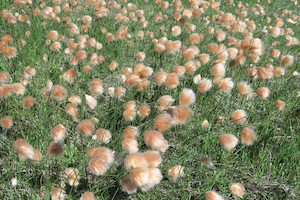Photo Credit: © Sean Blaney via iNaturalist.org. Creative Commons Attribution-NonCommercial 4.0 International (CC BY-NC 4.0) License; https://creativecommons.org/licenses/by-nc/4.0/.
Eriophorum russeolum
Common Name: red cottongrass
Plant Functional Group: Graminoid
Class > Order > Family: Magnoliopsida > Poales > Cyperaceae
